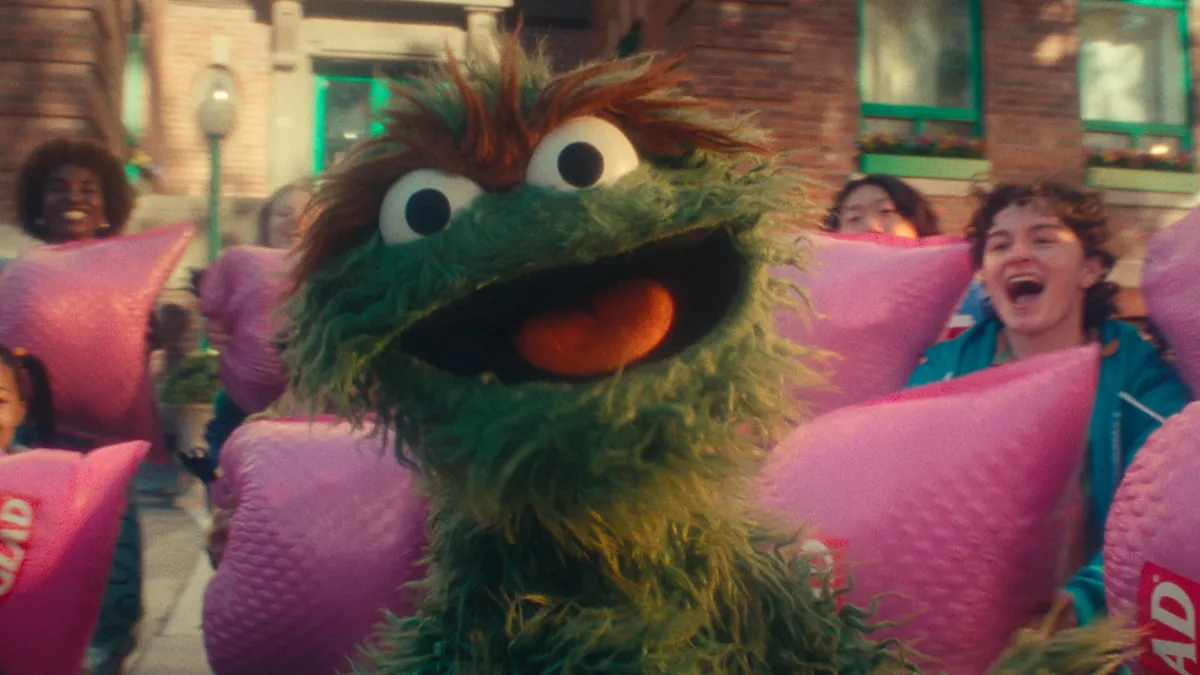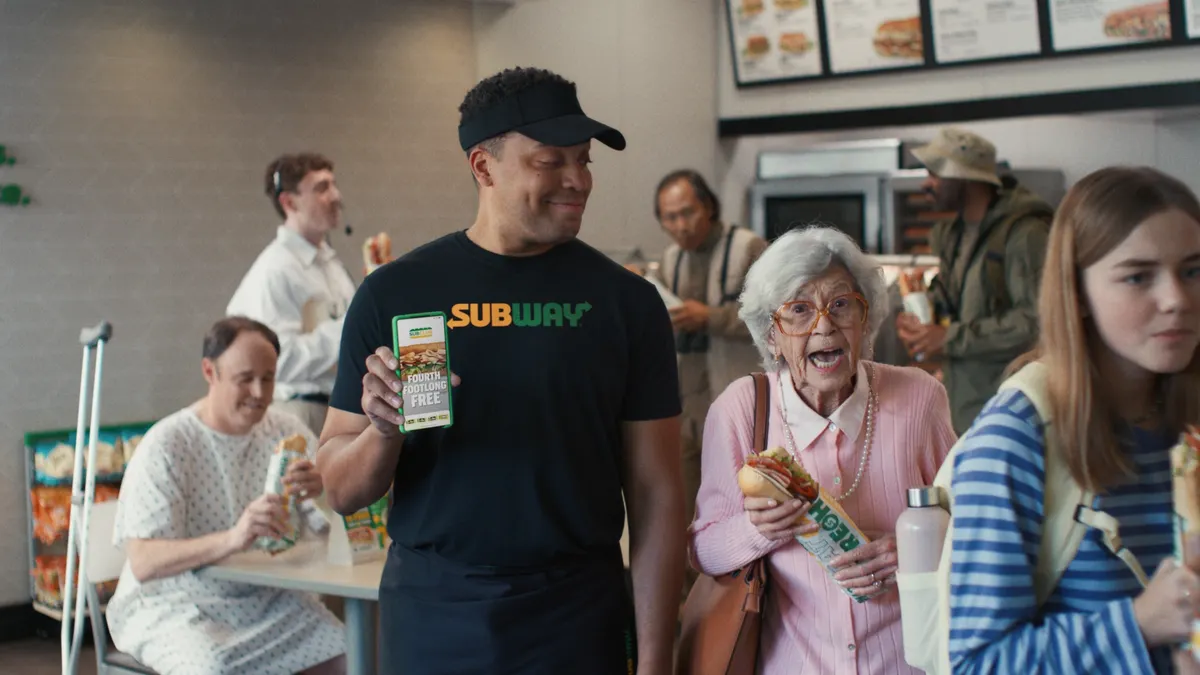Influencer marketing — a space that's largely driven by the currency of social capital — is a booming industry that's hit the mainstream with the ubiquity of smartphones and social media, reeling in nearly $2 billion in revenue in 2016.
The tactic is nothing new, as paid endorsements and product placements have roots dating back well before YouTube or other social channels came into play. However, it's quickly become a key tool for marketers. Research from Bloglovin found that 32% of marketers using influencers see the tactic as essential to their overall marketing strategy, and 41% reported more success with influencer campaigns than with traditional advertising, as it often delivers 11x higher ROI.
But as significant as social influencers' role in the marketing mix has become, it doesn't come without its challenges like murky success metrics and the continued blurring of the line between organic and sponsored content — not to mention a growing number of examples of fraud, like a vending machine in Moscow where people can buy likes, favorites and followers for all the top social media channels with a quick swipe of their credit card.
"I think there's nothing more powerful than word-of-mouth and someone saying 'I trust this brand, you should try it too.' But with the way influencer marketing is set up today and how it's operated from a brand and influencer perspective, it's very very broken," said Brian Salzman, founder and CEO of RQ agency. "It's a pay-to-play model where brands are paying people to say certain things without experiencing the brand, without living the brand and without being connected to the brand."
Losing its luster
The prevalence of fraud has put influencer marketing in the hot seat, leading to the Federal Trade Commission's (FTC) recent issuing of "reminder letters" to nearly 100 influencers and marketers — including Johnson & Johnson, Chanel and Heidi Klum — for failing to adequately disclose that their endorsements on social media were paid ads. Noticing that many of the people included disclosures like #ad or #sponsored beneath Instagram's "more" button, the FTC drew up stricter guidelines, adding that disclosures should appear in the first three lines of a post's text above the fold. The effort has also led to a number of marketers getting slapped with up to 20 years of sanctions for failing to police influencers that pushed content without properly communicating it was paid for.
"[...] the way influencer marketing is set up today and how it's operated from a brand and influencer perspective, it's very very broken."

Brian Salzman
RQ agency founder and CEO
The lack of disclosure isn't restricted to major celebrities. According to Eric Dahan, CEO of Open Influence, the bigger problem stems from smaller influencers who can more easily fly under the radar as watchdogs like the FTC simply don't have the bandwidth to monitor everyone.
"They don't have the target painted on their back from the legal perspective in the same way, so they're more likely to game the system and try to skirt around disclosure requirements," he said.
But rather than making an example out of a handful of well-known celebrities, the issue might be better addressed by offering incentives, suggests Gil Eyal, CEO of influencer marketing platform HYPR.
"We need to encourage platforms to make their influencers disclose by their giving brands access to analytics or the ability to boost posts that are disclosed sponsored ads. That's much more effective than chasing people and punishing those who try to cheat the system," Eyal said.
One of the most popular social media platforms for influencers, Instagram, has begun to take steps to standardize the disclosure process. In June, it announced it would test a "Paid partnership with" label at the top of influencers' posts, an unobtrusive but straightforward signal for viewers. The tag also lets the partnering brands automatically get access to the post's reach and engagement data, which will show up in the same Facebook dashboard as the rest of their ad analytics, according to a blog post by Instagram.
When robots take over the (influencer) world
In the world of influencer marketing, the number of followers, subscribers and likes someone has are key metrics in determining potential partnerships with brands and how much money influencers rake in.
But what if some of those followers are fake?
Some users have taken to artificially inflating their follower count by enlisting the help of automated bot software that links fake accounts to a user's page. This shortcut is often a pretty cheap way to quickly grow a user's following — $25 for 1,500 followers or $119 for 10,000, per to a price list on bot service Buy-Instagram.
"The market is designed to incentivize influencers to make themselves look bigger. Similar to performance enhancing drugs, when one influencer uses it, others have to do the same thing to keep up," Eyal said.
According to the executive, this is occurring at "epidemic" rates and has the potential to become a massive issue among brands, social media platforms and influencers, particularly lesser-known ones that can boost their following 2-3x overnight with the use of bots.
"The market is designed to incentivize influencers to make themselves look bigger. Similar to performance enhancing drugs, when one influencer uses it, others have to do the same thing to keep up."

Gil Eyal
HYPR CEO
Once an influencer is revealed to have major bot traffic, that person is typically black-listed by the ad community, according to Dahan.
"It can easily be the kiss of death for their careers. It's treated as fraud," he said. "Quality influencers or influencers that treat their account as a business avoid bot followers."
There are some signs, however, that signal potential bot traffic — or "vanity metrics," according to Mediakix — such as irregular comment behavior, spikes and dips in follower growth patterns and disproportionately low engagement rates for the number of followers a user has.
Instagram's pod problem
Because social media influencers are still relatively new to the marketing mix, and the space still has no established standards or dedicated watchdog, marketers should consider that what might look like a large audience could simply be the result of a paid tool used to artificially boost numbers — or it could even be a pod problem. According to Digiday, some influencers game Instagram's algorithm to boost their visibility in the platform's Explore tab by partnering with fellow influencers to comment on each other's posts at least daily. This can increase engagement analytics for each pod member and cause the platform's algorithm to favor them and display their content to more users.
Though pods are not always bad, one downside for marketers hiring influencers in a pod is that their engagement numbers are artificially improved. That means their following could be misleading as other pod members are engaging to boost their own visibility — not because they like the branded message. This could create false competition and impact the nature of the audience the brand aims to target, as well as the amount of money an influencer's partnership costs, as fees are often based on audience size.
Pods are a response from influencers after Instagram instituted an algorithm that disrupted their numbers on the platform. They're also a cautionary tale for marketers relying on influencer campaigns that have notoriously been bought and sold on murky measurements.
"It's really not about the likes and the shares, and that starts with thinking of influencers as human beings and not digital numbers."

Brian Salzman
RQ agency founder and CEO
The future of bots and pods in influencer marketing is not totally clear, though several companies have popped up to tackle these industry-wide challenges. Fohr Card developed a tool to measure "follower health" by analyzing the activity of an influencer's followers and sorting them into three categories — active, lurkers and bots — to give brands more information before signing on a new influencer.
But despite the few tools created to bring things under control, addressing these issues is still a relatively manual process that Dahan says brands can avoid by selecting the right influencers from the start and ensuring they understand the guidelines and ethics of the deal.
If the problems continue to build, some brands might be tempted to overhaul their marketing strategy and nix influencers altogether to protect their image and cut costs on low-value tactics. But for now, that doesn't seem to be the case, as nearly a third of marketers still view influencers as essential to their strategy.
Relationships are the name of the game
Despite the potential bot and pod problem surrounding the current state of influencer marketing, at the end of the day, users are smart and will likely see through the phony shortcuts, RQ's Salzman said.
"There's no easy, quick win in this arena. It can't be a transactionary approach; it must be a human approach built on honesty and authenticity," he said. "It's really not about the likes and the shares, and that starts with thinking of influencers as human beings and not digital numbers."




















